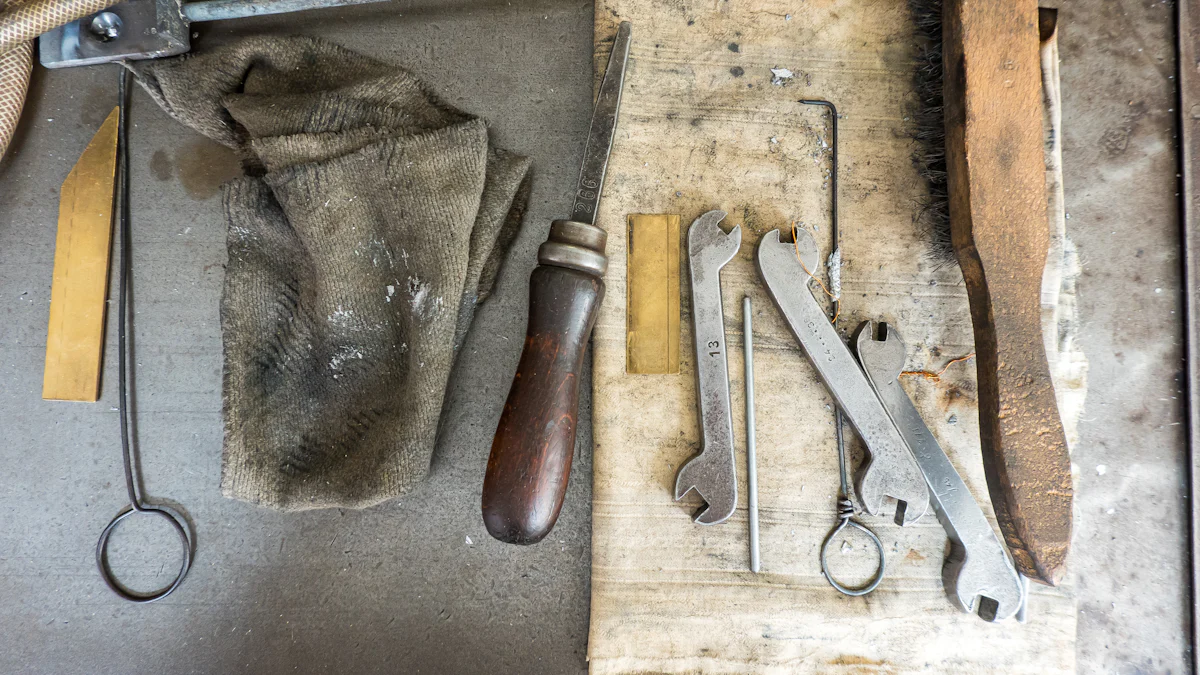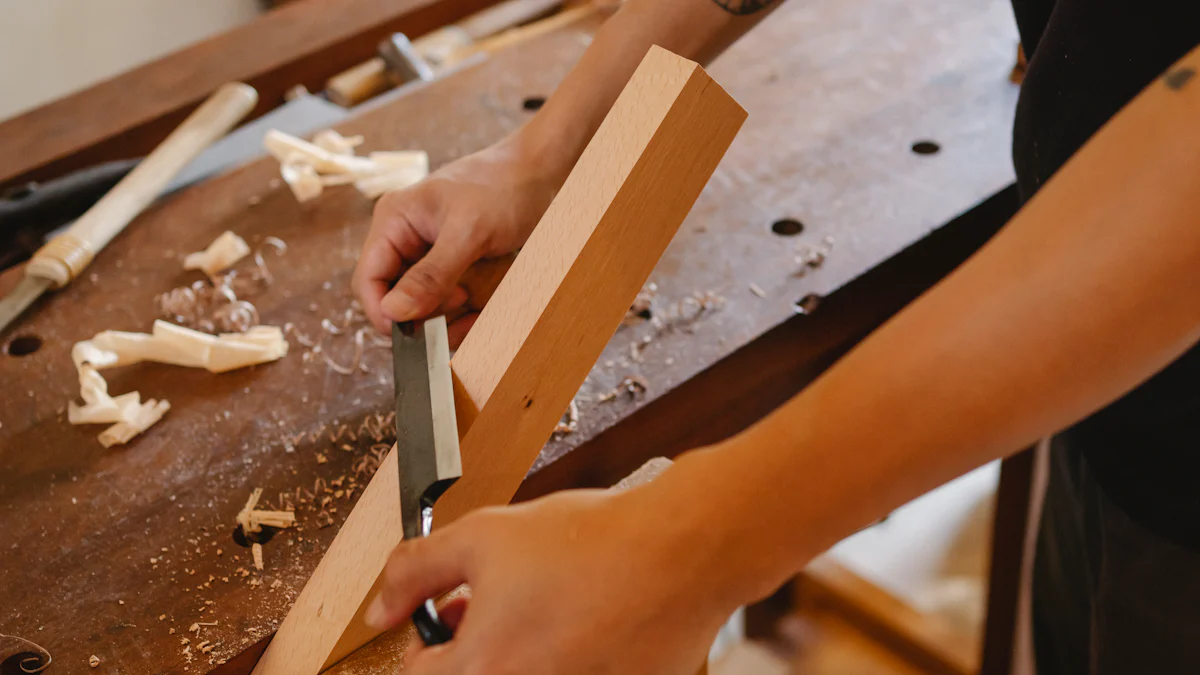
Colonial hardware tools played a crucial role in the daily lives of early American settlers. High-quality, English-made tools arrived in America in large quantities, providing craftsmen with essential implements. The colonial hardware black book of tools serves as an invaluable reference, cataloging these historical tools. This review aims to provide a comprehensive analysis of the craftsmanship, design, and materials used in these tools, offering insights into their significance and evolution.
Historical Background of Colonial Hardware Tools

Evolution of Tool Design
Early Colonial Period
Early American settlers relied heavily on tools brought from Europe. Craftsmen used these tools for various tasks, including building homes and crafting furniture. The design of these tools reflected the practical needs of the time. Simplicity and durability were key characteristics. Tools like axes and hammers had straightforward designs that prioritized functionality over aesthetics.
Mid to Late Colonial Period
The mid to late colonial period saw significant advancements in tool design. Local blacksmiths began to modify European tools to better suit the American environment. This period introduced more specialized tools. For example, saws became more refined, allowing for more precise cuts. The evolution of tool design during this time reflected the growing complexity of colonial life and industry.
Common Materials Used
Wood
Wood served as a primary material for many colonial tools. Craftsmen often used hardwoods like oak and hickory due to their strength and durability. Wooden handles provided a comfortable grip, essential for prolonged use. The availability of wood made it a practical choice for tool construction.
Metal
Metal components added strength and longevity to colonial tools. Blacksmiths commonly used iron and steel for blades, heads, and other critical parts. The process of forging metal allowed for the creation of sharp, durable edges. Metalworking skills were highly valued, contributing to the overall quality of the tools.
Influences on Tool Development
European Influence
European designs heavily influenced early colonial tools. Settlers brought tools from England and other parts of Europe, which set the standard for craftsmanship. The techniques and styles of European blacksmiths shaped the initial development of colonial tools. This influence remained strong throughout the early colonial period.
Indigenous Influence
Indigenous peoples also impacted the development of colonial tools. Native Americans shared their knowledge of local materials and techniques with settlers. This exchange led to the adaptation of certain tools to better suit the North American environment. For instance, indigenous methods of woodworking influenced the design of axes and other cutting tools.
“Tools: Working Wood in 18th-Century America” highlights the blend of European and indigenous influences on colonial tools. This blend created a unique set of implements tailored to the needs of early American craftsmen.
The historical background of colonial hardware tools reveals a rich tapestry of innovation and adaptation. The evolution of tool design, the choice of materials, and the influences on development all contributed to the effectiveness and efficiency of these essential implements.
Detailed Review of Specific Tools from the Colonial Hardware Black Book of Tools
Hand Tools in the Colonial Hardware Black Book of Tools
Axes and Hatchets
Axes and hatchets served as essential tools for early American settlers. These tools featured robust wooden handles, often made from hickory or oak. The metal heads, forged from iron or steel, provided durability and sharpness. Craftsmen used axes for chopping wood and clearing land. Hatchets, smaller in size, allowed for more precise tasks such as shaping wood and splitting kindling. The colonial hardware black book of tools documents various designs, reflecting the evolution of these indispensable implements.
Saws
Saws played a crucial role in woodworking and construction. Early colonial saws had straight, toothed blades made from high-quality steel. The handles, crafted from hardwood, offered a comfortable grip. Different types of saws, such as crosscut and rip saws, catered to specific cutting needs. Crosscut saws excelled at cutting across the grain, while rip saws worked well for cutting along the grain. The colonial hardware black book of tools provides detailed descriptions of these saws, highlighting their importance in colonial craftsmanship.
Hammers
Hammers, another vital tool, came in various forms. The most common type, the claw hammer, featured a flat striking surface and a curved claw for removing nails. Blacksmiths forged hammerheads from iron or steel, ensuring strength and longevity. Wooden handles, typically made from ash or hickory, provided balance and comfort. The colonial hardware black book of tools includes numerous examples of hammers, showcasing their versatility and essential role in construction and repair work.
Agricultural Tools
Plows
Plows revolutionized agriculture by making soil preparation more efficient. Early colonial plows had wooden frames with iron blades. These blades cut through the soil, turning it over to prepare for planting. The design of plows evolved over time, incorporating stronger materials and more effective shapes. The colonial hardware black book of tools offers insights into the development of plows, emphasizing their impact on farming productivity.
Hoes
Hoes served as fundamental tools for weeding and cultivating soil. The blades, made from iron or steel, attached to long wooden handles. This design allowed farmers to work comfortably while standing. Different shapes and sizes of hoe blades catered to various agricultural tasks. The colonial hardware black book of tools details the construction and use of hoes, underscoring their importance in maintaining crop health.
Scythes
Scythes, with their long curved blades, facilitated the efficient harvesting of crops. The blades, forged from high-quality steel, attached to long wooden shafts. This design enabled farmers to cut large swaths of grain or grass with minimal effort. The colonial hardware black book of tools highlights the craftsmanship involved in creating scythes, reflecting their critical role in agriculture.
Construction Tools
Chisels
Chisels, essential for woodworking, featured sharp metal blades and sturdy wooden handles. Craftsmen used chisels for carving and shaping wood. The colonial hardware black book of tools describes various types of chisels, each designed for specific tasks. For example, mortise chisels created square holes, while paring chisels allowed for fine, detailed work.
Planes
Planes smoothed and shaped wood surfaces. These tools had flat metal bases with adjustable blades. Craftsmen pushed planes along the wood grain, removing thin shavings to achieve a smooth finish. The colonial hardware black book of tools includes detailed accounts of different planes, illustrating their significance in producing high-quality wooden items.
Levels
Levels ensured that structures remained even and balanced. Early levels consisted of wooden frames with glass tubes filled with liquid and an air bubble. Craftsmen used levels to check the alignment of surfaces during construction. The colonial hardware black book of tools provides examples of these early levels, demonstrating their importance in achieving precision in building projects.
Analysis of Tool Craftsmanship

Quality of Materials
Durability
Colonial hardware tools exhibited exceptional durability. Craftsmen selected materials with care to ensure longevity. Iron and steel formed the core components of many tools. Blacksmiths employed advanced forging techniques to enhance strength. Wooden handles, often made from hardwoods like hickory and oak, provided resilience. These materials resisted wear and tear, ensuring prolonged use.
Workmanship
The workmanship of colonial tools reflected a high level of skill. Blacksmiths and woodworkers demonstrated meticulous attention to detail. Each tool featured precise construction, ensuring functionality. The Colonial Williamsburg Foundation replicates these tools, showcasing the craftsmanship involved. Visitors can observe the intricate processes used by 18th-century artisans. The quality of workmanship contributed significantly to the effectiveness of these tools.
Functional Design
Ergonomics
Ergonomics played a crucial role in the design of colonial tools. Craftsmen prioritized user comfort and efficiency. Handles featured smooth finishes to prevent blisters. The weight distribution of tools like axes and hammers ensured balanced handling. This focus on ergonomics allowed craftsmen to work for extended periods without fatigue. The design principles remain relevant today, emphasizing the timeless nature of ergonomic considerations.
Efficiency
Efficiency defined the functional design of colonial tools. Each tool served a specific purpose with precision. Saws, for example, featured teeth patterns optimized for different cuts. Crosscut saws excelled at cutting across the grain, while rip saws performed well along the grain. Plows incorporated iron blades to enhance soil penetration. The Colonial Hardware Black Book of Tools documents these designs, highlighting their impact on productivity. The efficient design of these tools enabled early American settlers to accomplish tasks effectively.
“Tools: Working Wood in 18th-Century America” illustrates how craftsmen used these tools to make a living. The blend of durability, workmanship, ergonomics, and efficiency created a unique set of implements tailored to the needs of early American craftsmen.
Comparisons with Modern Tools
Technological Advancements
Material Improvements
Colonial tools primarily used iron and wood. Modern tools, however, incorporate materials like plastic and aluminum. These modern materials offer several advantages. Plastic components reduce weight, making tools easier to handle. Aluminum provides strength without adding excessive bulk. The shift from handcrafted iron to mass-produced materials also allows for greater consistency in quality.
Design Innovations
Design innovations have transformed tool functionality. Colonial tools relied on manual power. Modern tools often use electricity or batteries. Power tools increase efficiency and reduce physical strain. Ergonomic designs have also improved. Handles now feature rubber grips and adjustable parts. These enhancements make modern tools more user-friendly.
Practicality and Usage
Ease of Use
Modern tools excel in ease of use. Electric drills replace hand-cranked versions. This change speeds up tasks and reduces effort. Lightweight materials also contribute to ease of use. Plastic and aluminum make tools less cumbersome. These advancements allow for longer periods of work without fatigue.
Versatility
Versatility characterizes modern tools. Multi-functional designs enable a single tool to perform various tasks. For example, a modern multi-tool can include pliers, screwdrivers, and knives. Colonial tools often had specialized functions. Modern tools adapt to different needs, offering greater flexibility. This versatility makes modern tools indispensable in various trades.
“Tools: Working Wood in 18th-Century America” illustrates the limitations of colonial tools. Modern advancements have addressed many of these issues, providing more efficient and versatile solutions for today’s craftsmen.
The review of colonial hardware tools from the Black Book reveals key findings. The craftsmanship and material quality of these tools ensured durability and efficiency. The evolution of tool design reflected the practical needs of early American settlers. Colonial Williamsburg curator Jay Gaynor noted, “Nobody’s ever tried to look at tools in such a comprehensive way before.”
Colonial hardware tools hold significant historical value. These tools represent the ingenuity and resourcefulness of early craftsmen. The blend of European and indigenous influences created unique implements tailored to the colonial environment.
The Black Book remains relevant today. Modern professionals can draw inspiration from the detailed documentation of these historical tools. The Black Book serves as a valuable reference for understanding the development and significance of early American craftsmanship.
See Also
Scooter Upgrades: High-Quality Parts for Maximum Performance
Discovering Diverse Sock Options for Both Genders
Mastering Winter Comfort with Soft and Cozy Towel Socks
